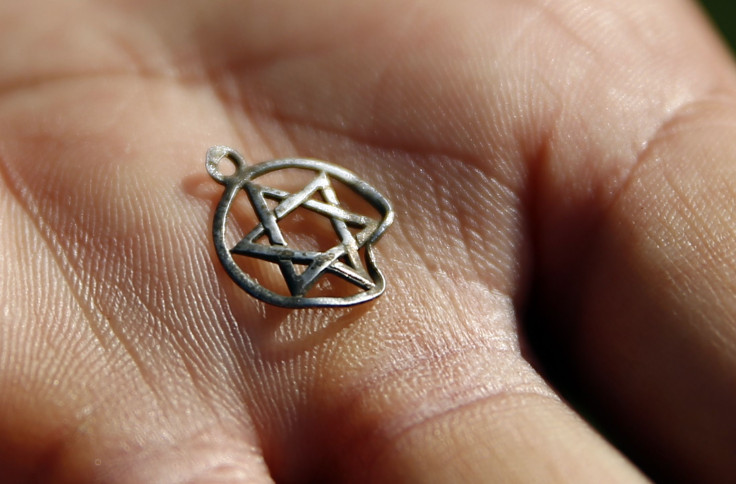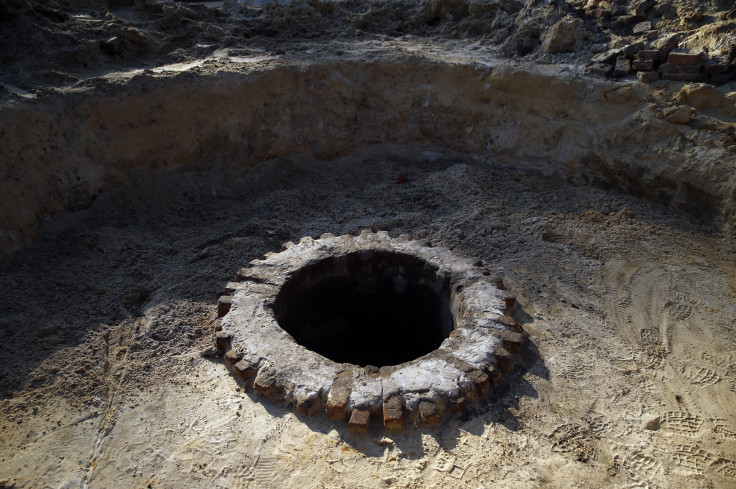Nazi Death Camp In Poland Is ‘One Huge Crime Scene’ After Dig Unearths Gas Chambers Disguised As Baths [PHOTOS]

Archaeologists have unearthed a previously unknown set of gas chambers at the site of a Nazi death camp in Poland. It is estimated that more than a quarter of a million Jews were killed at the Sobibor extermination camp between May 1942 and October 1943. While the site on the outskirts of the village of Sobibor already has a memorial and a museum, the gas chambers remained hidden after German forces tried to destroy all traces of the camp following a prisoner uprising there in the fall of 1943, according to a new study from the International Institute for Holocaust Research.
After eight years of excavations, archaeologists have uncovered "one huge crime scene," Tomasz Kranz, director of Poland's Majdanek Museum, which maintains the site’s memorial, told The Telegraph. The outlines of brick walls discovered during the digs designate where the gas chambers, eight in total, were located. Archaeologists say some 500 people were murdered at a time in the chambers, whose true purpose was disguised by a sign that read “baths.” There were fake shower heads mounted to the walls, as there were at Auschwitz, according to The Telegraph.

Researchers say the brick walls of the chambers were surprisingly well-preserved. Artifacts discovered at the site included a golden wedding ring with a Hebrew inscription that read, "Behold, you are consecrated unto me,” according to Reuters. A medallion in the shape of the Star of David was also recovered.
Less is known about what took place at Sobibor than other death camps like Auschwitz, in part because the Germans razed the camp and because so few of those sent there made it out alive. "The extermination of people took place there; murder by smoke from an engine that killed everyone within 15 minutes in these gas chambers, in torment, shouting," Polish archaeologist Wojciech Mazurek, who was involved in the excavation of Sobibor, told Reuters. He said the Nazis even bred geese at the camp to drown out the cries coming from the gas chambers.
Sobibor was one of 16 forced labor camps in the Lublin district of Poland established after 1940 by the German occupiers. On Oct. 14, 1943, some 600 prisoners led a revolt to escape the camp. About half of them succeeded. SS chief Heinrich Himmler ordered the camp closed and destroyed shortly after.

On Tuesday, Germany charged a 93-year-old former Nazi guard who worked at the Auschwitz death camp in occupied Poland with at least 300,000 counts of accessory to murder. Prosecutors said the officer abetted the murders of the mostly Jewish prisoners in the gas chambers there, according to AFP.
Another former Nazi, 89-year-old Johann “Hans” Breyer, was arrested in the U.S. in June on a German arrest warrant. He is accused of aiding in the murders of 216,000 Jews at Auschwitz. Breyer died at a hospital in Philadelphia in July before he could be extradited to Germany for trial.
© Copyright IBTimes 2024. All rights reserved.












